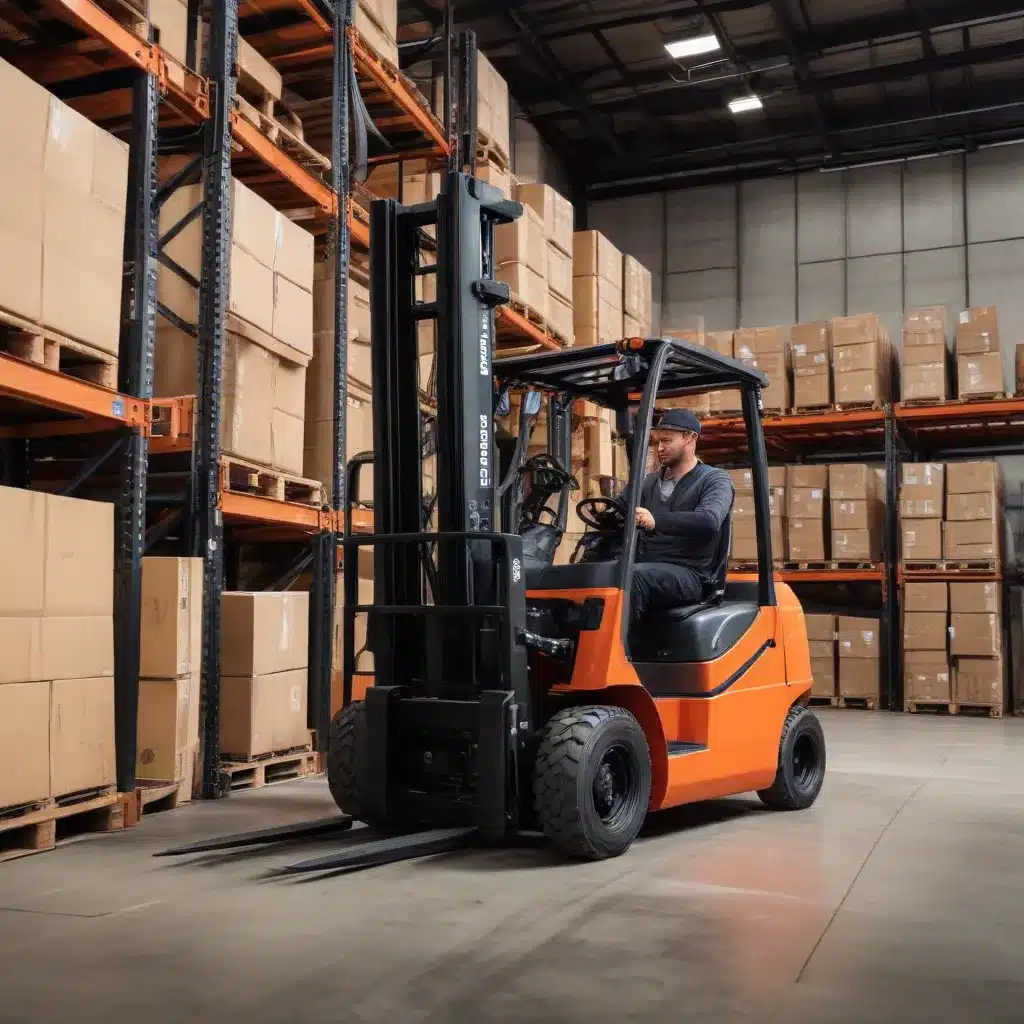
Forklift Leasing vs. Buying: Aligning Your Choice with Your Data-Driven Decision-Making and Business Intelligence Initiatives
The Forklift Leasing Versus Buying Dilemma: Leveraging Business Analytics to Drive an Optimal Fleet Management Strategy
As a seasoned industry expert in forklifts, warehousing, and logistics, you understand the pivotal role these workhorses play in supporting efficient operations. However, the question of whether to lease or buy forklifts is a critical strategic decision that requires a data-driven approach. In this comprehensive article, we’ll explore how aligning your forklift acquisition strategy with your business intelligence (BI) and analytics initiatives can unlock significant operational and financial benefits.
Uncovering the Hidden Costs: The True Total Cost of Ownership (TCO) Analysis
When contemplating forklift acquisition, the initial price tag is often the primary consideration. However, a true TCO analysis reveals a more nuanced picture. Factors like maintenance, repairs, insurance, and operator training can significantly impact the long-term costs of owning a forklift fleet. By tapping into your company’s BI capabilities, you can gain a granular understanding of these hidden expenses and make a more informed decision.
Leveraging BI to Optimize Forklift Utilization
Your BI tools can provide valuable insights into forklift usage patterns, highlighting areas of underutilization or over-utilization. This data can help you right-size your fleet, ensuring you have the appropriate number and type of forklifts to meet your operational demands without incurring unnecessary costs. Additionally, tracking forklift usage can unveil opportunities to consolidate tasks or optimize workflow, further enhancing your return on investment.
Predictive Maintenance: Minimizing Downtime and Repair Costs
Integrating forklift performance data with your BI systems can enable predictive maintenance strategies, allowing you to anticipate and address issues before they result in costly breakdowns. By analyzing factors like operating hours, load capacities, and maintenance histories, you can proactively schedule servicing and part replacements, reducing downtime and extending the lifespan of your forklifts.
Aligning Forklift Acquisition with Your Growth Trajectory
Your BI insights should also factor in your company’s growth projections and anticipated changes in operational demands. This forward-looking approach can help you determine whether leasing or buying forklifts better aligns with your strategic goals. For example, if you anticipate rapid expansion or fluctuating needs, leasing may provide the flexibility to scale your fleet up or down as required. Conversely, if you have a stable, predictable workload, purchasing forklifts may be the more cost-effective long-term solution.
The Leasing Advantage: Optimizing Cash Flow and Risk Management
Forklift leasing offers several advantages that may resonate with your data-driven decision-making process. By leveraging BI to analyze your cash flow, capital expenditures, and risk profile, you can determine if leasing is the optimal choice for your organization.
Preserving Capital and Improving Cash Flow
Leasing forklifts typically requires lower upfront costs compared to purchasing, freeing up capital that can be deployed elsewhere in your business. This improved cash flow can be particularly beneficial for companies experiencing rapid growth or facing uncertain market conditions. BI tools can help you model the impact of leasing on your financial statements, enabling you to make more informed decisions.
Mitigating Residual Value Risk
When purchasing forklifts, you assume the risk of the asset’s resale value depreciating over time. Leasing, on the other hand, shifts this risk to the leasing provider, who typically guarantees a predetermined residual value at the end of the lease term. BI analytics can help you quantify and compare the financial implications of these risks, empowering you to make a more strategic choice.
Adaptability and Flexibility
Leasing forklifts provides the flexibility to adapt your fleet size and composition to changing business needs. Your BI insights can inform these decisions, allowing you to quickly scale up or down, upgrade to newer models, or redeploy assets as your operational requirements evolve.
Integrating Forklift Data into Your Broader BI and Analytics Ecosystem
To fully leverage the power of data-driven decision-making, it’s crucial to integrate forklift-related data into your organization’s broader BI and analytics ecosystem. By connecting forklift performance, utilization, and maintenance information with your other business intelligence, you can unlock a more comprehensive understanding of your operations and identify opportunities for optimization.
Aligning Forklift Management with Your Warehouse and Logistics Strategies
Forklift data, when combined with warehouse management, transportation, and supply chain analytics, can provide a holistic view of your material handling operations. This integrated approach can help you identify bottlenecks, optimize workflow, and ensure your forklift fleet is aligned with your broader logistics strategies.
Enhancing Safety and Compliance with Data-Driven Insights
By integrating forklift-related data into your BI ecosystem, you can leverage predictive analytics to enhance safety and compliance. For example, analyzing operator behavior, maintenance records, and incident reports can help you proactively identify and mitigate potential risks, ensuring your forklift operations adhere to industry standards and regulations.
Driving Continuous Improvement with Data-Driven Insights
The iterative nature of BI and analytics enables you to continuously refine your forklift management strategies. By regularly reviewing and analyzing forklift data, you can identify areas for improvement, test new approaches, and measure the impact of your decisions, fostering an environment of ongoing optimization.
Conclusion: Striking the Right Balance Between Leasing and Buying Forklifts
In the dynamic world of material handling, the decision to lease or buy forklifts is not a one-size-fits-all proposition. By aligning your forklift acquisition strategy with your data-driven decision-making and BI initiatives, you can strike the right balance, optimizing your fleet management, improving operational efficiency, and driving sustainable growth for your organization.
Embrace the power of business intelligence and analytics to navigate the forklift leasing versus buying dilemma, and unlock the full potential of your material handling operations. Visit https://www.forkliftreviews.com/ to explore more industry insights and stay at the forefront of forklift technology and best practices.

